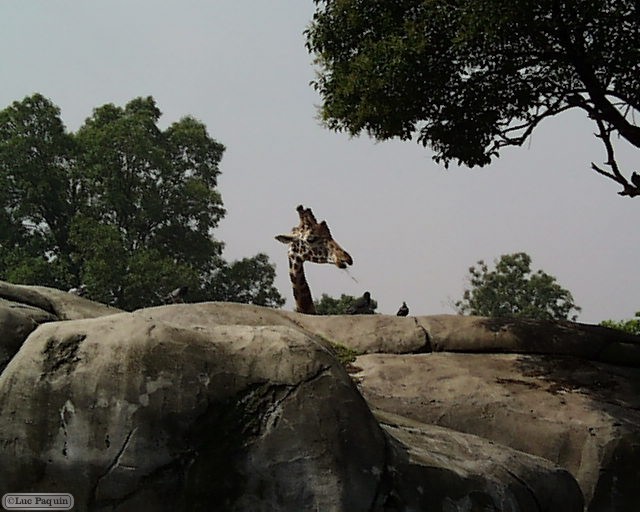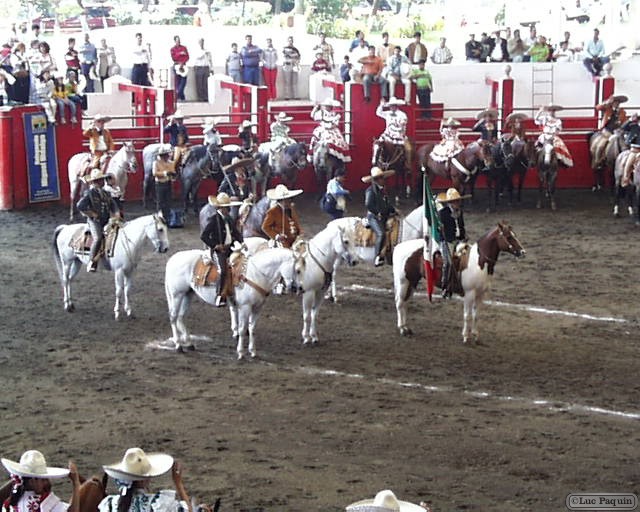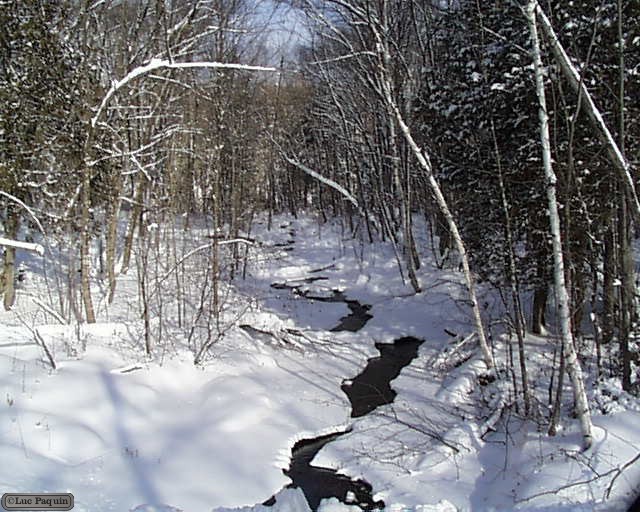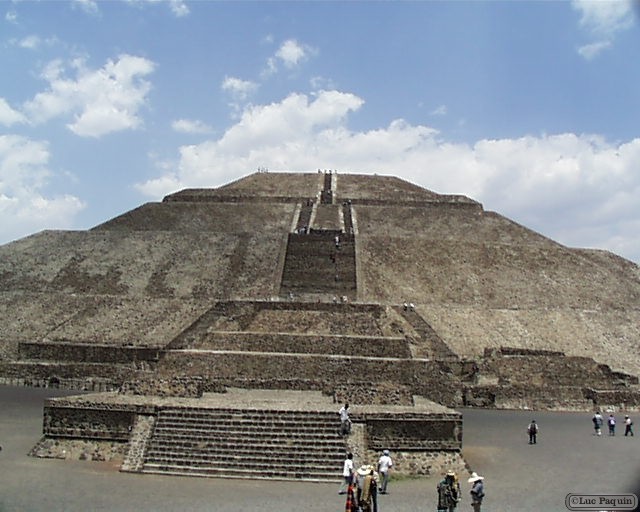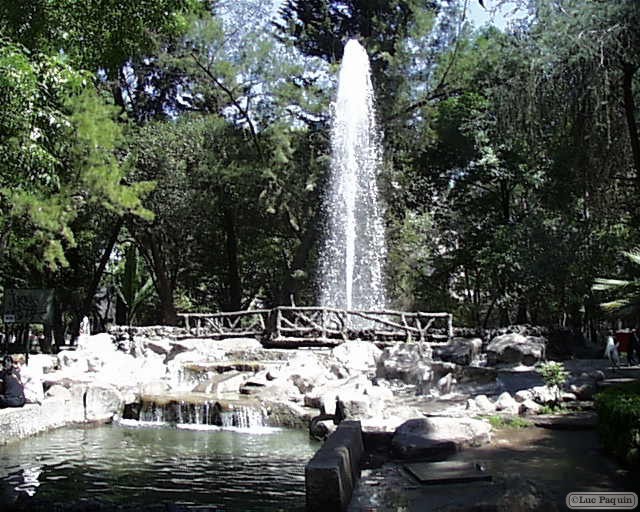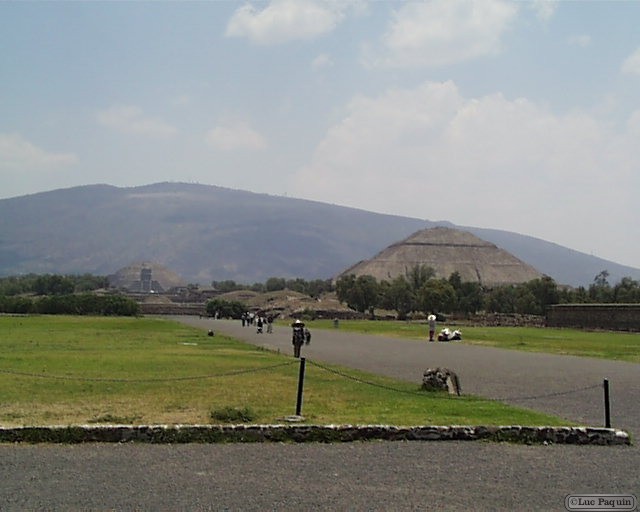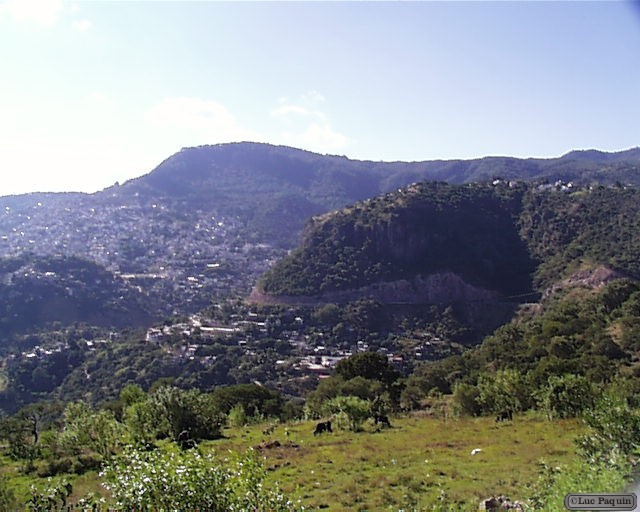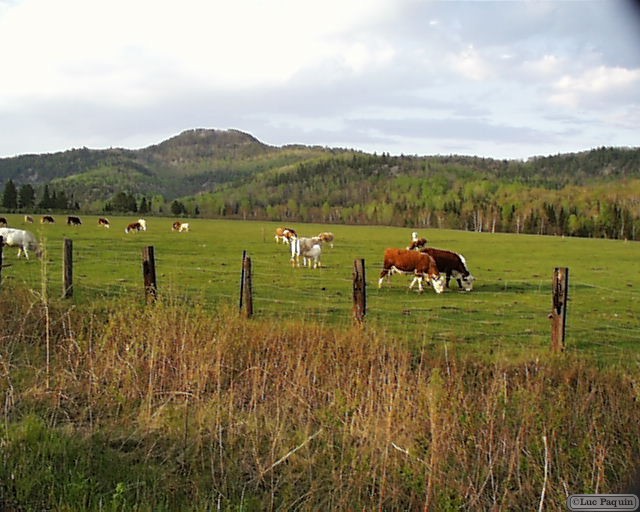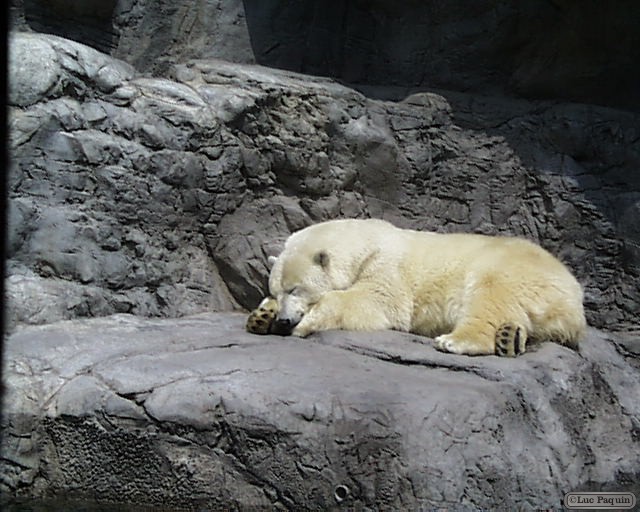Year: 2003 (October 30, 2003)
11″ x 8.5″
Media: Canon® Pro Platinum High Gloss Photo Paper
Printers: Canon® PIXMA
Color
Art: Photo
Artist: Luc Paquin
Zoológico de Chapultepec
The zoo opened in 1924. The biologist Alfonso L. Herrera, founder of Chapultepec Zoo, wanted to recreate the famous zoo and aviary of Moctezuma II. He wanted to exhibit the native species for Mexicans, along with other species from the rest of the world. The collection would include mammals, birds and reptiles, as well as an aquarium.
After several visits to the United States, Herrera obtained the first animals for the zoo, three lion cubs and two American bison. The native animals came from different Mexican states like Sonora, Veracruz and Campeche, while other animals were exchanged with countries like India, France, Peru and Brazil. This first collection consisted of 243 animals.
Giraffe
The giraffe is an African even-toed ungulate mammal, the tallest living terrestrial animal and the largest ruminant. Its species name refers to its camel-like shape and its leopard-like coloring. Its chief distinguishing characteristics are its extremely long neck and legs, its horn-like ossicones, and its distinctive coat patterns. It is classified under the family Giraffidae, along with its closest extant relative, the okapi. The nine subspecies are distinguished by their coat patterns.
The giraffe’s scattered range extends from Chad in the north to South Africa in the south, and from Niger in the west to Somalia in the east. Giraffes usually inhabit savannas, grasslands, and open woodlands. Their primary food source is acacia leaves, which they browse at heights most other herbivores cannot reach. Giraffes are preyed on by lions; their calves are also targeted by leopards, spotted hyenas, and wild dogs. Adult giraffes do not have strong social bonds, though they do gather in loose aggregations if they happen to be moving in the same general direction. Males establish social hierarchies through “necking”, which are combat bouts where the neck is used as a weapon. Dominant males gain mating access to females, which bear the sole responsibility for raising the young.
Luc
Year: 2004 (June 13, 2004)
11″ x 8.5″
Media: Canon® Pro Platinum High Gloss Photo Paper
Printers: Canon® PIXMA
Color
Art: Photo
Artist: Luc Paquin
Charreada
A ‘Charreada’ a colorful Mexican rodeo at the Lienzo Charro here in Mexico City.
Lienzo Charro
A lienzo charro is an arena where charros hold the events of charreada, torneo de colas and bull riding.
A lienzo has two areas: one 60 by 12 metres and a second, circular area 40 metres in diameter. Charreada is a team competition in which teams go head-to-head to win points in different competitions. The team with the most points at the end wins. The torneo de colas, also known as the coleadero, is a multi- or single-competitor event in which a mounted charro throws a bull to the ground by catching its tail, wrapping it under his leg, and making a turn. The lienzo charro may be enclosed to accommodate bull-riding competitions.
Luc
Year: 2002 (April 2, 2002)
11″ x 8.5″
Media: Canon® Pro Platinum High Gloss Photo Paper
Printers: Canon® PIXMA
Color
Art: Photo
Artist: Luc Paquin
Lac des Trois Montagnes
Lac des Trois Montagnes, La Conception, QC, Canada. Snowfall.
Snow
Snow is precipitation in the form of flakes of crystalline water ice that falls from clouds. Since snow is composed of small ice particles, it is a granular material. It has an open and therefore soft, white, and fluffy structure, unless subjected to external pressure. Snowflakes come in a variety of sizes and shapes. Types that fall in the form of a ball due to melting and refreezing, rather than a flake, are known as hail, ice pellets or snow grains. The process of precipitating snow is called snowfall.
Luc
Year: 2005 (June 02, 2005)
11″ x 8.5″
Media: Canon® Pro Platinum High Gloss Photo Paper
Printers: Canon® PIXMA
Color
Art: Photo
Artist: Luc Paquin
Teotihuacan
The city is thought to have been established around 100 BC, with major monuments continuously under construction until about AD 250. The city may have lasted until sometime between the 7th and 8th centuries AD, but its major monuments were sacked and systematically burned around 550 AD. At its zenith, perhaps in the first half of the 1st millennium AD, Teotihuacan was the largest city in the pre-Columbian Americas, with a population estimated at 125,000 or more, making it at minimum the sixth largest city in the world during its epoch. Teotihuacan began as a new religious center in the Mexican Highland around the first century AD. This city came to be the largest and most populated center in the New World. Teotihuacan was even home to multi-floor apartment compounds built to accommodate this large population. The term Teotihuacan (or Teotihuacano) is also used for the whole civilization and cultural complex associated with the site.
Although it is a subject of debate whether Teotihuacan was the center of a state empire, its influence throughout Mesoamerica is well documented; evidence of Teotihuacano presence can be seen at numerous sites in Veracruz and the Maya region. The Aztecs may have been influenced by this city. The ethnicity of the inhabitants of Teotihuacan is also a subject of debate. Possible candidates are the Nahua, Otomi, or Totonac ethnic groups. Scholars have also suggested that Teotihuacan was a multiethnic state.
Luc
Year: 2004 (March 14, 2004)
11″ x 8.5″
Media: Canon® Pro Platinum High Gloss Photo Paper
Printers: Canon® PIXMA
Color
Art: Photo
Artist: Luc Paquin
Parque México
The Parque México, also known as the Parque San Martín, is a large urban park located in Colonia Hipódromo in the Condesa area of Mexico City. It is recognized by its Art Deco architecture and decor as well as being one of the larger green areas in the city. The park was built in the 1920s, when its surrounding neighborhood of Colonia Hipódromo was being established. It is the former site of a horse race track on an hacienda that belonged to the Countess of Miravalle. When this part of the hacienda was being partitioned and redeveloped into a housing area, environmental laws at the time did not permit housing on the former track. Instead it was turned into the current park. Today, Parque México is not only the center of Colonia Hipódromo, it is also the center of the entire La Condesa section of the city.
Luc
Year: 2005 (June 02, 2005)
11″ x 8.5″
Media: Canon® Pro Platinum High Gloss Photo Paper
Printers: Canon® PIXMA
Color
Art: Photo
Artist: Luc Paquin
Teotihuacan
Teotihuacan, also written Teotihuacán, was a pre-Columbian Mesoamerican city located in a sub valley of the Valley of Mexico, located in the State of Mexico 30 miles northeast of modern-day Mexico City, known today as the site of many of the most architecturally significant Mesoamerican pyramids built in the pre-Columbian Americas. Apart from the pyramids, Teotihuacan is also anthropologically significant for its complex, multi-family residential compounds; the Avenue of the Dead; and the small portion of its vibrant murals that have been exceptionally well-preserved. Additionally, Teotihuacan exported a so-called “Thin Orange” pottery style and fine obsidian tools that garnered high prestige and widespread utilization throughout Mesoamerica.
Luc
Year: 2004 (March 18, 2004)
11″ x 8.5″
Media: Canon® Pro Platinum High Gloss Photo Paper
Printers: Canon® PIXMA
Color
Art: Photo
Artist: Luc Paquin
Mercado de Jamaica
Mercado Jamaica is one of Mexico City’s traditional public markets where various vendors sell their wares in an established location. This market was inaugurated in the 1950s as part of efforts to modernize the markets in the area. The market is located on the corner of Congreso de la Union and Avenida Morelos, just southeast of the historic center of the city. Although it is one of the main markets for groceries, produce and meat, it is best known for its flowers and ornamental plants. There are 1,150 stands dedicated to the selling of cut flowers, flower arrangements, ornamental plants and accessories such as flowerpots. The market offers about 5,000 types of flowers and plants, mostly foreign, but there is a number of native Mexican species available, including some gathered directly from the wild.
Mole
All mole preparations begin with one or more types of chili pepper. The classic moles of central Mexico and Oaxaca, such as mole poblano and mole negro, include two or more of the following types: ancho, pasilla, mulato and chipotle. Other ingredients can include black pepper, achiote, guaje, cumin, cloves, anise, tomatoes, tomatillos, garlic, sesame seeds, dried fruit, hoja santa and many others. Mole poblano has an average of 20 ingredients; mole almendrado has an average of 26, and Oaxacan moles can have over 30. Chocolate, if used, is added at the end of cooking. The ingredients of mole can be grouped into five distinct classes: chiles, sour (tomatillos), sweet (dried fruits and sugar), spices, and thickeners (nuts and tortillas).
Luc
Year: 2003 (November 2003)
11″ x 8.5″
Media: Canon® Pro Platinum High Gloss Photo Paper
Printers: Canon® PIXMA
Color
Art: Photo
Artist: Luc Paquin
Taxco
The climate ranges from hot and relatively moist in the flatlands to warm and relatively moist in the higher mountainous areas. Average temperatures for the year range between 18 and 20 C. Most of the municipality is covered in semi-tropical foliage which has a tendency to drop leaves during the dry season from October to May. In the highest elevations, pine and oak forests can be found.
The city of Taxco de Alarcón is the seat and the governing authority for 141 other communities, the largest of which are Tlamacazapa, Acamixtla, Acuitlalpan, Atzala and Taxco el Viejo. The total population of the municipality is 98,854, and the territory measures 347km2. Less than 3% of the population of the municipality is of pure indigenous ethnicity according to the Census. The two indigenous languages spoken here are Nahuatl and Zapotec. It borders with the municipalities of Tetipac, Iguala, Teloloapan, Buena Vista de Cuellar, Pedro Ascencio Alquisiras and Ixcateopan as well at the state of Puebla.
The terrain has an average altitude of 1,752 meters, which ranges from 1,000 meters to 2,300 meters. Seventy five percent of its territory consists of rugged mountains, twenty percent is semi-flat and only five percent is flat. The flatter lands are in the lower elevations. The major rivers here are the Taxco and the Temixco, with a number of arroyos that feed into them during the rainy season. There is a lake that is filled only part of the year and a small dam called San Marcos.
Most of the municipality’s natural resources lie underground in the form of gold, silver, lead, copper, and zinc deposits. Above ground a number of species of timber trees exist as well as areas for agriculture and livestock. Principle crops grown in the municipality are corn, peanuts, luffa sponges, beans and tomatillos. Livestock consists of pigs, goats, horses and some fowl. Most of the industry here revolves around mining precious metals as well as the manufacture of drywall and masonry materials.
Luc
Year: 2002 (May 2002)
11″ x 8.5″
Media: Canon® Pro Platinum High Gloss Photo Paper
Printers: Canon® PIXMA
Color
Art: Photo
Artist: Luc Paquin
Brébeuf
Brébeuf is a parish municipality in the Laurentides region of Quebec, Canada, part of Les Laurentides Regional County Municipality. It is located along the Rouge River (Rivière Rouge), near Mont-Tremblant.
Dairy cattle (also called dairy cows or milk cows) are cattle cows bred for the ability to produce large quantities of milk, from which dairy products are made. Dairy cows generally are of the species Bos taurus.
Historically, there was little distinction between dairy cattle and beef cattle, with the same stock often being used for both meat and milk production. Today, the bovine industry is more specialized and most dairy cattle have been bred to produce large volumes of milk.
Luc
Year: 2003 (October 30, 2003)
11″ x 8.5″
Media: Canon® Pro Platinum High Gloss Photo Paper
Printers: Canon® PIXMA
Color
Art: Photo
Artist: Luc Paquin
Zoológico de Chapultepec
Chapultepec Zoo is a zoo located in Chapultepec Park; it is one of four zoos near Mexico City, and the best known Mexican zoo. It was founded July 6, 1923 by Mexican biologist Alfonso Luis Herrera using donations from private citizens and governmental funds from the Ministry of Agriculture and Development, and also with funds from the Society of Biological Studies. The zoo is rather popular after a recent renovation begun in 1992 which took two years; estimates of its popularity range from 5.5 million visitors per year to as much as 8 million, who all come to see its large collection of almost 2000 animals from more 200 different species. It is the second largest zoo in Mexico after the Guadalajara Zoo in Guadalajara, Jalisco.
Polar bear
The polar bear (Ursus maritimus) is a carnivorous bear whose native range lies largely within the Arctic Circle, encompassing the Arctic Ocean, its surrounding seas and surrounding land masses. It is a large bear, approximately the same size as the omnivorous Kodiak bear (Ursus arctos middendorffi). A boar (adult male) weighs around 350-700 kg, while a sow (adult female) is about half that size. Although it is the sister species of the brown bear, it has evolved to occupy a narrower ecological niche, with many body characteristics adapted for cold temperatures, for moving across snow, ice, and open water, and for hunting the seals which make up most of its diet. Although most polar bears are born on land, they spend most of their time at sea. Their scientific name means “maritime bear”, and derives from this fact. Polar bears hunt their preferred food of seals from the edge of sea ice, often living off fat reserves when no sea ice is present.
The polar bear is classified as a vulnerable species, with eight of the nineteen polar bear subpopulations in decline. For decades, large scale hunting raised international concern for the future of the species but populations rebounded after controls and quotas began to take effect. For thousands of years, the polar bear has been a key figure in the material, spiritual, and cultural life of Arctic indigenous peoples, and polar bears remain important in their cultures.
Luc
